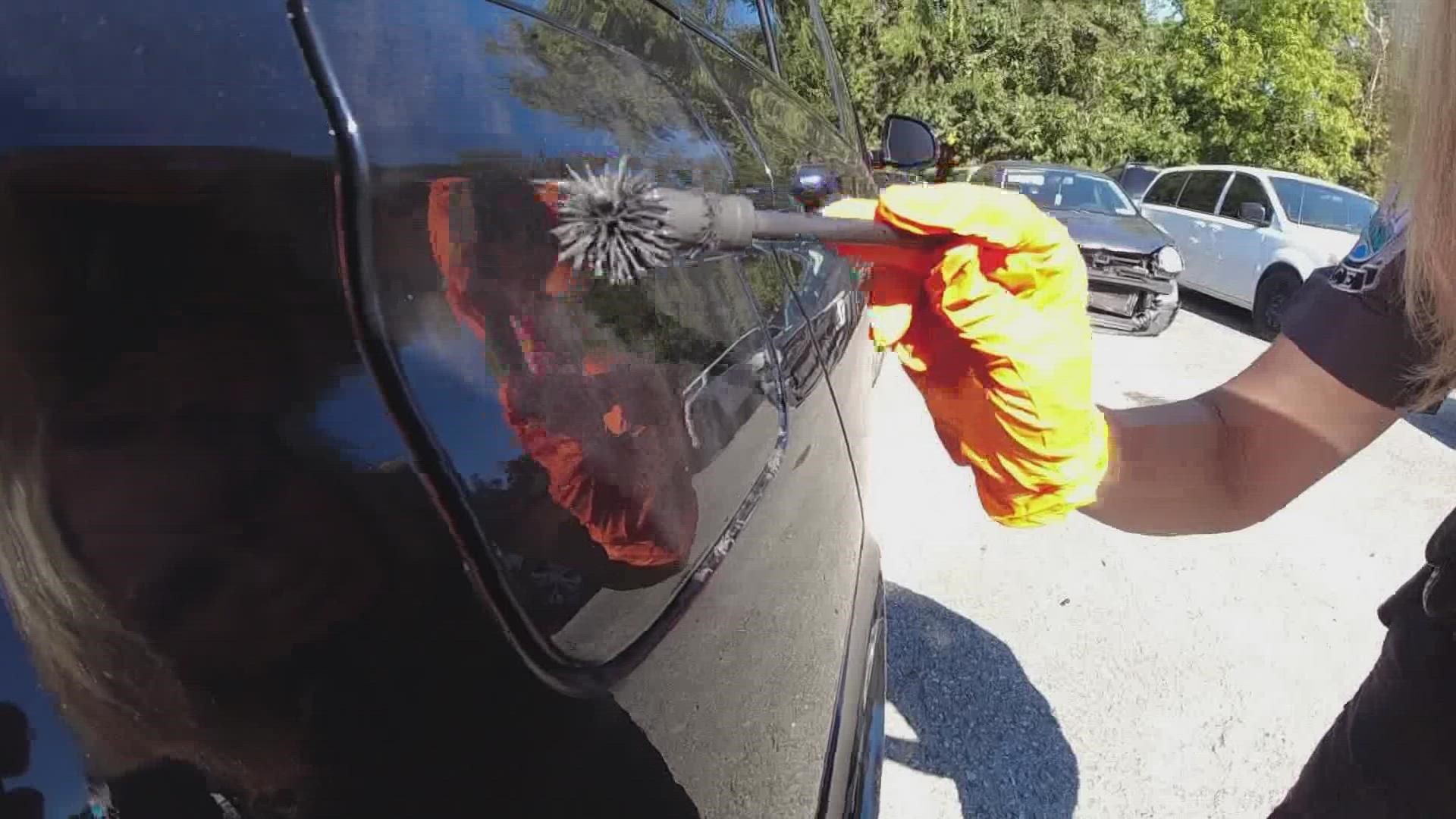KNOXVILLE, Tenn. — This week is National Forensic Science Week. Forensic scientists are often the "secret weapon" law enforcement uses to fight crime. DNA, fingerprints, shell casings, and left-behind clothing often help this team solve the case.
The forensics team in the criminal investigation division of the Knoxville Police Department is key to the division's success.
"We always say were the backbone of the criminal investigation division, because what we do is we get the facts, we get the science, and that is what gives us our suspects," said Jacklyn Hale, a forensic scientist.
The team's wheels never stop turning. According to Rachel Warren, the forensics team can respond to up to ten calls on any given day.
Warren is one of the team members that collects evidence from crime scenes. One way she collects evidence is through fingerprints on cars. She uses aluminum powder to materialize those prints for the human eye.
"The exteriors of cars are a good place to process prints," Warren said.
Once she gets a full, clear fingerprint, she will lift it from the car with tape and bring it back to the forensics lab.
That's when Rosa Gonzales comes in. She helps prepare the fingerprint to be photographed. She uses special glue to keep the print intact before bringing it into a blacklight room.
"In this job, it could be anything from a car got broken into, we got to go out and fingerprinted to, you know a suicide or homicide, all just jammed into one day," Gonzales said.
She uses the blacklight room to test different chemicals that can help clarify the fingerprint.
"Most times the only evidence we'll have on those cases, it's just fingerprints," Gonzalez said. "Sometimes we have a lot of luck bringing out that latent print in rich detail."
She said they often have to work with just a portion of the print, which only makes the job more challenging. The fingerprint then moves on to be looked at by the latent examiner. They do the digital digging.
"When a CSI turns in a packet of fingerprints, we take it out, we look at it, we see if they're insufficient to run in our fingerprint identification system," said Hale.
She is one of the latent examiners for the unit.
The identification system searches more than 65 million prints. Not every person in the U.S. is in the system. It mainly includes people who have previously been through the criminal justice system, a member of law enforcement, someone who works with kids, or in another sector that requires fingerprinting.
Evidence recovered from the forensic unit can be used in court to help reach a verdict.
"We can't stop the grieving of one of our victims. We can start the healing process as soon as that jury comes back with 'guilty,'" Hale said.
As long as people commit crimes, this team is dedicated to catching them.
"We have great job security because the prints never stop coming," Hale said.
"I can't see myself doing anything else. I really do enjoy this job," Warren said.

